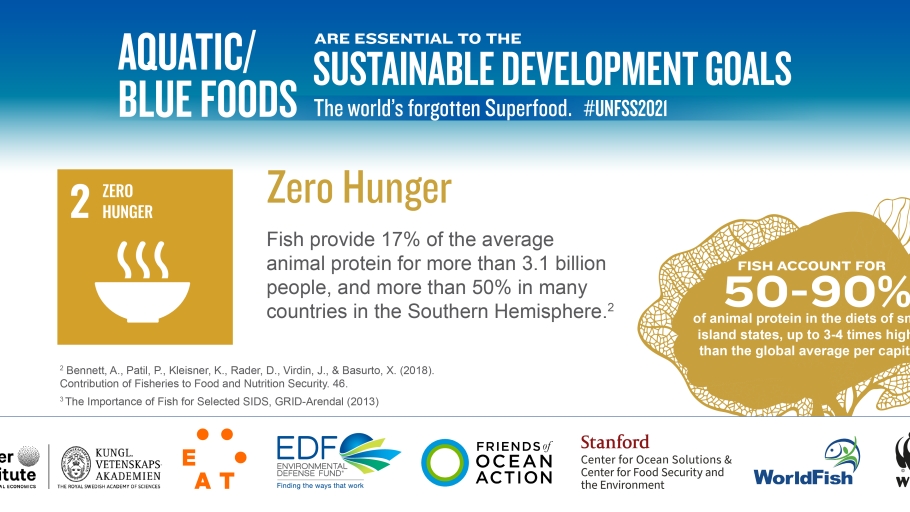
In the pursuit of achieving Sustainable Development Goal number two, Zero Hunger, the role of ‘blue foods’ has emerged as a significant player. Blue foods, often overlooked in discussions on health and nutrition, are aquatic foods sourced from marine and freshwater environments. In a recent podcast episode, Christopher Golden, an associate professor of nutrition and planetary health at the Harvard TH Chan School of Public Health, shed light on the importance of blue foods for both human health and the health of our planet.
The Importance of Blue Foods
Blue foods are a vital source of essential nutrients for millions of people worldwide. They play a pivotal role in filling micronutrient deficits and reducing consumption of less healthy meats, effectively addressing issues of both undernourishment and over-nourishment. This highlights their capacity to combat the dual burden of malnutrition, a challenge that many nations grapple with.
The Threat of Climate Change
However, the provision of these nutritious blue foods is under threat from climate change. Vulnerable regions, in particular, face significant risks to the availability and access to seafood. This threat calls for urgent measures to safeguard our food systems and ensure the sustained provision of these critical dietary components.
Interventions for Sustainable Blue Foods
Interventions such as marine-protected areas, trade policies, and national dietary guidelines have been suggested to ensure the sustainability and accessibility of blue foods. The focus is on making conscious dietary choices that protect both human health and the planet, thereby aligning with the ethos of planetary health.
‘Blue Transformation’: A Roadmap for Aquatic Food Systems
Recent literature has proposed a ‘Blue Transformation’ (BT), a roadmap for the transformation of aquatic food systems. This approach, which aligns with the 2021 Declaration for Sustainable Fisheries and Aquaculture of the Food and Agriculture Organization (FAO), prioritizes food systems as drivers of employment, economic growth, social development, and environmental recovery. An integrated framework has been suggested for systems in India to meet domestic and export demands of seafood, demonstrating the global relevance of this approach.
Addressing Global Hunger and Malnutrition
The World Food Programme (WFP) has been at the forefront of addressing hunger and malnutrition in both emergency and long-term development contexts. The organization’s efforts underscore the importance of sustainable development in eradicating malnutrition. WFP’s focus on addressing all forms of malnutrition, including through school feeding programs, represents a holistic approach to tackling this global issue.
Consumer Perceptions and Sustainability
As we navigate the sustainability transition of food systems, the role of consumers cannot be underestimated. Unfortunately, many consumers lack information about the sustainability of food products, and perceptions differ regarding which sustainability indicators are most important. Research has shown that transportation, processing, and packaging are seen as relevant for a sustainability label. Consumers have also expressed a desire for more responsibility from retailers and food producers, signaling a shift towards more sustainable consumer behaviors.
In conclusion, blue foods offer a promising avenue for achieving Zero Hunger and contributing to Sustainable Development Goals. However, their potential can only be realized through collective action, policy interventions, and individual dietary choices that prioritize both health and sustainability. As we face the challenges of the 21st century, the power of blue foods in our diets and our food systems cannot be underestimated.
